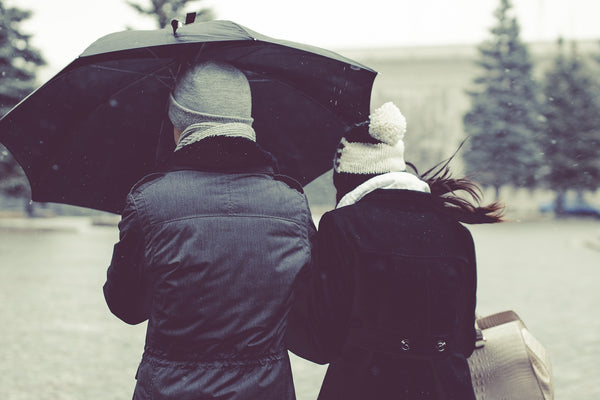- Continue Shopping
- Your Cart is Empty
Target Dry Guide to Keeping Warm (and Stylish) This Winter

When the temperatures plummet and frost glitters teasingly on the footpaths, venturing outside can become a dreaded prospect. Does wearing layer upon layer of clothing to the point of movement restriction sound familiar? When coordinated outfits are abandoned in favour of keeping warm, and the practical clothes you shunned before are a necessity, winter really becomes the most frustrating time of year. Gone are the days of those day dresses and light jackets hanging tantalisingly in your wardrobe as you long for brighter days. Do not despair however, your Target Dry guide to keeping warm, and importantly, stylish this winter is here to see you through to spring and make those winter days more bearable.
1. Layering
Your Mum has probably hammered this to you before but it really is all about the layers whenever the temperatures drop. It's important to have a base layer, a mid layer and an outer layer, these will trap air and thus help to keep you warm. If you stick to these three stages when putting your outfit together you should be well on your way to being warm. Your base layer should fitted quite close to the body as it will suck in perspiration from your skin. It should be made ideally from a warm material such as wool or fleece. Avoid cotton as this retains perspiration and will in turn make you cold.
For your mid layer body warmers/gilets are great investments to keep you warm without adding on an extra bulky layer to your arms - Yes, elbow movement doesn't need to be compromised after all this winter!
For your outer layer ventilation and breathability are a must. This will help when going between different temperatures, such as walking to the bus stop in the cold then getting on to a warm bus. Instead of your body struggling under the heat, with a breathable outer layer you'll handle varying temperatures with ease. Long waterproof coats are perfect for rainy mornings whereas quilted waterproof coats are a must have for those colder, wintery mornings.
2. Layering 2.0
Layering doesn't need to be limited to your torso, especially if you wear jeans and leggings often. With jeans and leggings not tending to be the warmest material for winter it can be a good idea to put on a pair of tights underneath them for a bit of extra protection from the cold. Runners tights tend to retain the heat best so you can finally end the annoyance of seemingly constant cold legs this winter.
3. The Hat Question
If you're stuck with the dilemma of having your hair ruined by a winter hat, perhaps it will make your decision easier by finding out that your head being the area of your body you lose body heat from more than any other is most is likely to be a myth. So, if you really want to skip a hat today, perhaps this info will ease your guilt. However, it is worth bearing in mind that any exposed part of your body will contribute to loss of body heat. So while we can't really wear onesies to work (unfortunately), adequately covering yourself from head to toe on colder mornings is a good idea. It is also important to note that children do lose heat more than adults do, so a warm, waterproof hat is definitely an advisable investment for your little ones.
4. Exercise
Doing some (small) exercise in the morning before you venture out into the cold can be a good idea to retain warmth. That's why they call it a warm up after all. Jumps, lunges, squats and pushups are all ideal to get your blood flowing and help maintain warmth. But, if the idea of exercise first thing in the morning seems hellish to you as an alternative wearing your coat around the house for a few minutes before you leave will help warm you up a bit in preparation.




kaity hall
Author